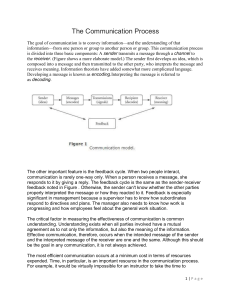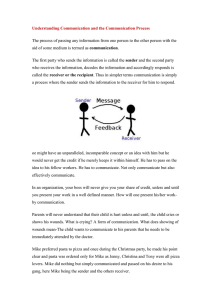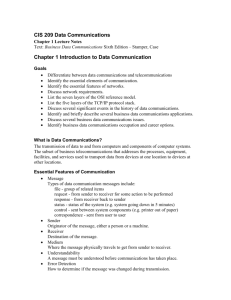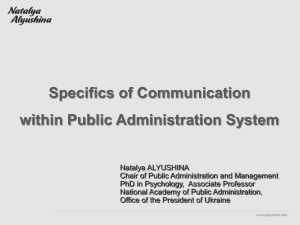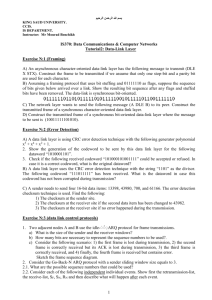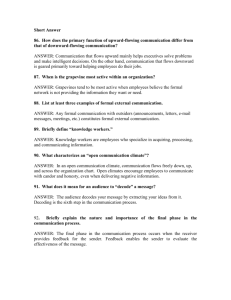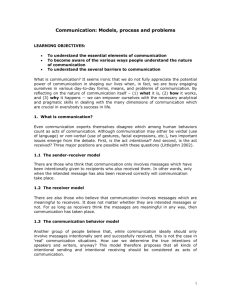wassFinalProject
advertisement
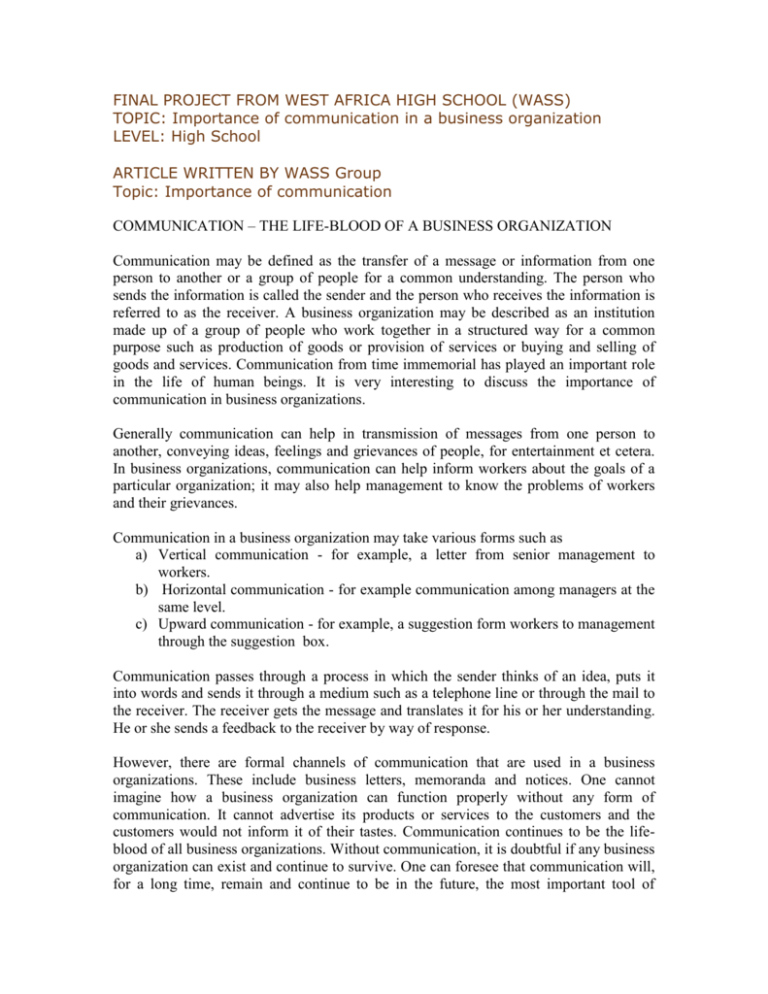
FINAL PROJECT FROM WEST AFRICA HIGH SCHOOL (WASS) TOPIC: Importance of communication in a business organization LEVEL: High School ARTICLE WRITTEN BY WASS Group Topic: Importance of communication COMMUNICATION – THE LIFE-BLOOD OF A BUSINESS ORGANIZATION Communication may be defined as the transfer of a message or information from one person to another or a group of people for a common understanding. The person who sends the information is called the sender and the person who receives the information is referred to as the receiver. A business organization may be described as an institution made up of a group of people who work together in a structured way for a common purpose such as production of goods or provision of services or buying and selling of goods and services. Communication from time immemorial has played an important role in the life of human beings. It is very interesting to discuss the importance of communication in business organizations. Generally communication can help in transmission of messages from one person to another, conveying ideas, feelings and grievances of people, for entertainment et cetera. In business organizations, communication can help inform workers about the goals of a particular organization; it may also help management to know the problems of workers and their grievances. Communication in a business organization may take various forms such as a) Vertical communication - for example, a letter from senior management to workers. b) Horizontal communication - for example communication among managers at the same level. c) Upward communication - for example, a suggestion form workers to management through the suggestion box. Communication passes through a process in which the sender thinks of an idea, puts it into words and sends it through a medium such as a telephone line or through the mail to the receiver. The receiver gets the message and translates it for his or her understanding. He or she sends a feedback to the receiver by way of response. However, there are formal channels of communication that are used in a business organizations. These include business letters, memoranda and notices. One cannot imagine how a business organization can function properly without any form of communication. It cannot advertise its products or services to the customers and the customers would not inform it of their tastes. Communication continues to be the lifeblood of all business organizations. Without communication, it is doubtful if any business organization can exist and continue to survive. One can foresee that communication will, for a long time, remain and continue to be in the future, the most important tool of management of any business organization which wants to progress. Thus business organizations ca hardly do without communication. Communication has its limitations depending on the cultural environment in which a particular organization is. For example, a multinational company cannot communicate in a foreign country in the same way it does in its home country because of different cultures. There may be problems or challenges in communication in a business organization. There may be physical barriers such as noise, clarity of expression by the sender, vague objectives of the message, other factors such as fear of the sender e.g. a strict manager sending information to a junior clerk. In spite of its limitations, communication in the world today, can be said to be better than communication in the world twenty (20) years ago. 20 years ago, in the developing countries, communication was mainly through the talking drums, ‘gong-gong’ beating, snail mail and word-of-mouth. In the developed countries it was through telephone of a low technology, snail mail, telegraph and Internet with a fairly low technology. Today, in both the developing and developed countries, means of communication are common. Thus, a company in Africa can send information to companies in any part of the world in a matter of minutes by electronic mail. One can say that business organizations are better off today than 20 years ago in terms of communications especially distant communication. We are of the opinion that if the barriers of communication can be taken into consideration and the appropriate channels of communication chosen, communication can continue to be an effective life-blood of business organizations.
